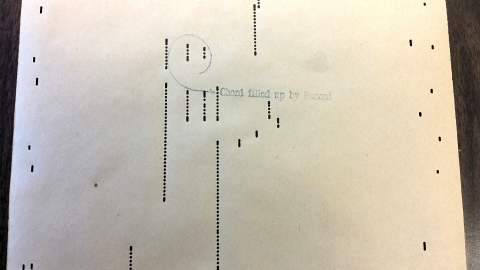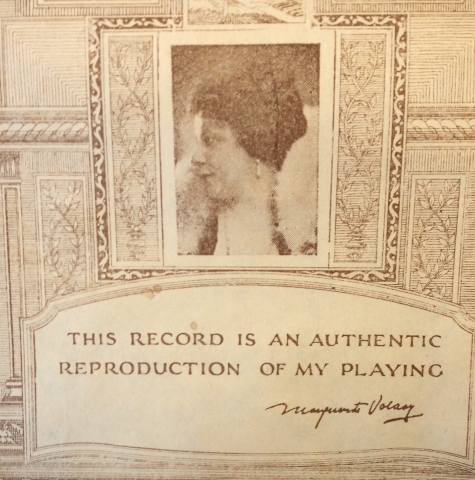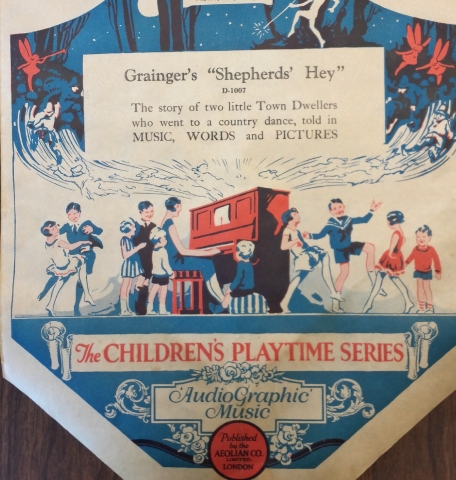Topics

“So, it’s the original karaoke machine?”
A recent visitor on a tour to the Archive of Recorded Sound made this comment to me as I showed off the roll I was cataloging. On plain beige paper, at first it looked like a regular piano roll. A label at the beginning. Expression and performance data perforations appeared as I unrolled the roll. Then, at the side: words! You can imagine gathering around the piano to sing along with a group of friends at a party, just as Stanford undergrads may have done at the Stanford Student Union in 1915 or Encina Commons in 1926.

Accompaniment piano rolls
It’s no surprise that the Denis Condon Collection of Reproducing Pianos and Rolls includes accompaniment piano rolls. Many were produced for the Welte-Mignon mechanism, as well as for other publishers like Duo-Art and Ampico. Earlier Welte-Mignon accompaniment rolls, like Welte-Mignon 1755, didn’t include words on the roll itself. The label indicates that this roll is for accompanying a soprano. One of the rollographies we use for cataloging indicates whether a roll originally included words.

The player piano also played the accompaniment part for instruments on other labels, such as Duo-Art. Pictured below is an accompaniment for violin. You can find all of the accompaniment rolls that have been cataloged by searching for “Accompaniment piano rolls” in our online catalog.

Analytical piano rolls
Analytical piano rolls use text and sometimes graphics printed on the roll to provide an analysis of the music as the roll plays through. For example, B-6138, issued by De Luxe Reproducing Roll Corporation for the Welte-Mignon licensee, is a special comparison roll that compares four interpretations by four different artists of the same piece. Notice that the second image says, "Busoni, at times, fills up his chords while the others follow the score more closely."



Welte-Mignon rolls have primarily featured pianist portraits as their only illustrations. In addition to the original catalogs, which we also own, they can be a great source of portraits for music researchers. Some De Luxe and Welte-Mignon rolls also have signatures of the pianists printed onto either the label or the leader.
Ossip Gabrilowitsch Marguerite Volavy


Audiographic, biographical, and educational rolls
Duo-Art published more colorful and intricately illustrated rolls. Audiographic, biographical, and educational piano rolls allow the listeners to watch a story, analysis, or a biography unscroll in front of them. Here are just a few examples from part of our uncataloged section of the collection.
Duo-Art, D-1007. Children's playtime series. "Shepherd's hey" played by Percy Grainger.


Duo-Art, A-3. Mendelssohn's "Spring song" played by Josef Hofmann, with listener's notes by George H. Gartlan.


Currently the Archive of Recorded Sound has 12,272 piano rolls, of which only 1100 have been cataloged so far. To learn more about visiting and researching our collection, check out the Archive’s website or contact us directly, soundarchive@stanford.edu. If you would like to see more digitization, cataloging, and programming, check out how you can help support the Player Piano Project and its future activities.


 Stanford University Home
Stanford University Home